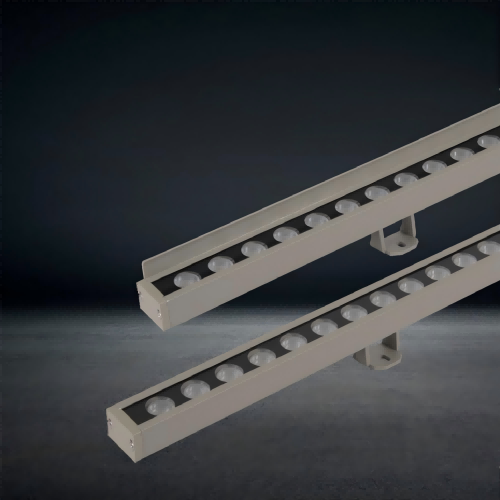Potting waterproofing is a high-grade sealing technique widely used in LED outdoor lighting. It involves filling the fixture's electronic compartment with a specialized liquid compound that hardens into a solid, protective matrix, ensuring exceptional environmental resilience.
How it Works:
Precision Structural Design:
The aluminum alloy housing features dedicated potting grooves or cavities.
Critical electronics (driver, LED board, controls) are mounted within this sealed cavity.
Design ensures the sole access point before potting is the potting port.
Selecting the Potting Compound:
Waterproof Sealing: Full encapsulation blocks moisture.
Electrical Insulation: Prevents short circuits.
Thermal Conductivity (≥0.6 W/m·K): Vital heat transfer to the housing/sink.
Low-Temp Flexibility/Thermal Shock Resistance: Prevents cracking (-40℃ to +85℃+).
UV Resistance/Anti-Aging: Resists yellowing, embrittlement, cracking.
Adhesion Strength: Bonds to housing/components.
Environmental: Low VOC, RoHS compliant.
Processability: Easy mixing, degassing, and gap-filling flow.
Core materials: Modified epoxy, polyurethane (PU), or silicone (silicone).
Key selection criteria:
Stringent Potting Process:
Cleaning & Preheating: Cavity must be clean, dry, sometimes preheated.
Precise Mixing: Exact ratio mixing for 2-part compounds.
Vacuum Degassing: Critical step to eliminate air bubbles.
Precision Pouring: Compound fills the cavity naturally, penetrating all voids.
Curing: Under specific temperature/humidity to form solid mass.
Post-Processing & Sealing: Excess cleaned; potting port often gets additional sealing.
Key Advantages:
Ultra-High IP Ratings: Achieves IP66, IP67, IP68, or IP69K reliably.
Comprehensive Protection: Waterproofing, moisture resistance, corrosion resistance (harsh environments).
Enhanced Heat Dissipation: Thermally conductive compound creates efficient heat path.
Vibration & Shock Resistance: Secures and cushions components.
Improved Safety: Prevents internal/external electrical shorts.
Extended Lifespan: Boosts reliability (e.g., 50,000+ hours), especially for drivers.
Prevents Condensation: Seals out humid air.
Considerations:
Cost & Weight: Higher than gasket-only or structural sealing (O-rings).
Repair Difficulty: Internal circuit repair is extremely difficult post-cure.
Compound Performance is Critical:
Silicone: Best overall (flexibility, temp, UV) but highest cost.
Polyurethane: Balanced cost-performance.
Modified Epoxy: Lower cost for niche applications (e.g., potting driver only).
Not Conformal Coating: Potting fills the entire cavity creating a solid seal; conformal coating is only a thin PCB surface layer (IPX6/X7), offering lower protection.
Summary:
Potting waterproofing is a proactive, high-grade sealing technique. Injecting specialized liquid compound creates a seamless solid matrix that completely encapsulates electronics, offering barrier protection, thermal management, and component security. It is a core technology for delivering reliable, long-life LED outdoor lighting performance in harsh environments (rain, salt, extreme temps). Achieving design performance depends critically on high-quality compounds and rigorous process execution.




